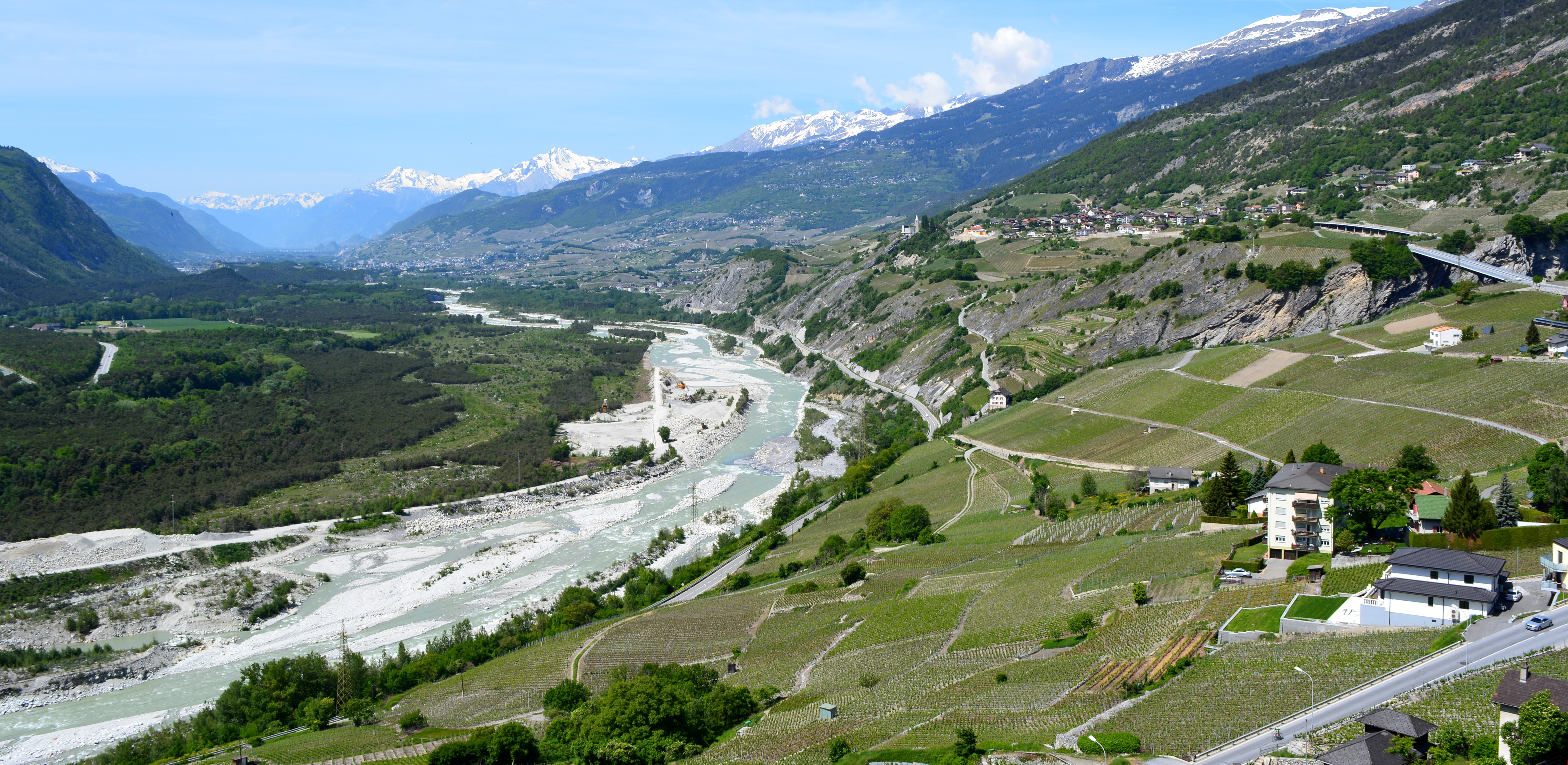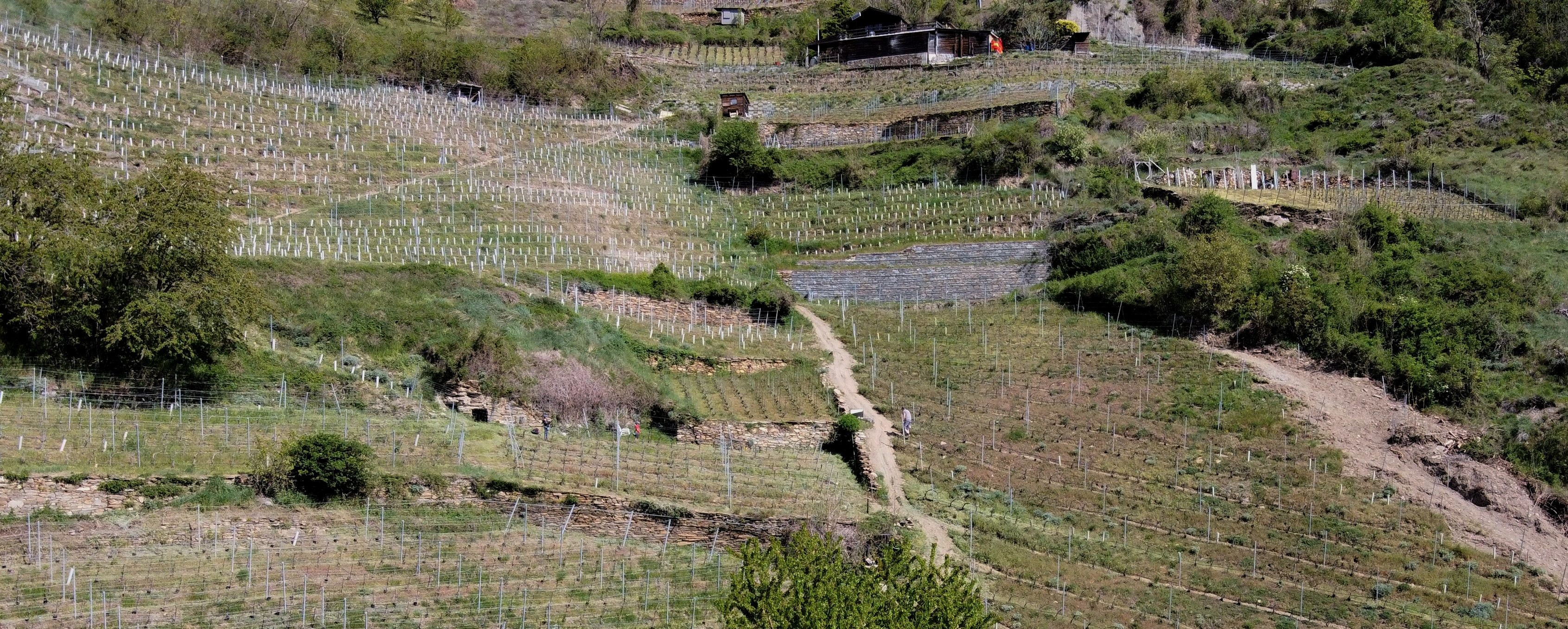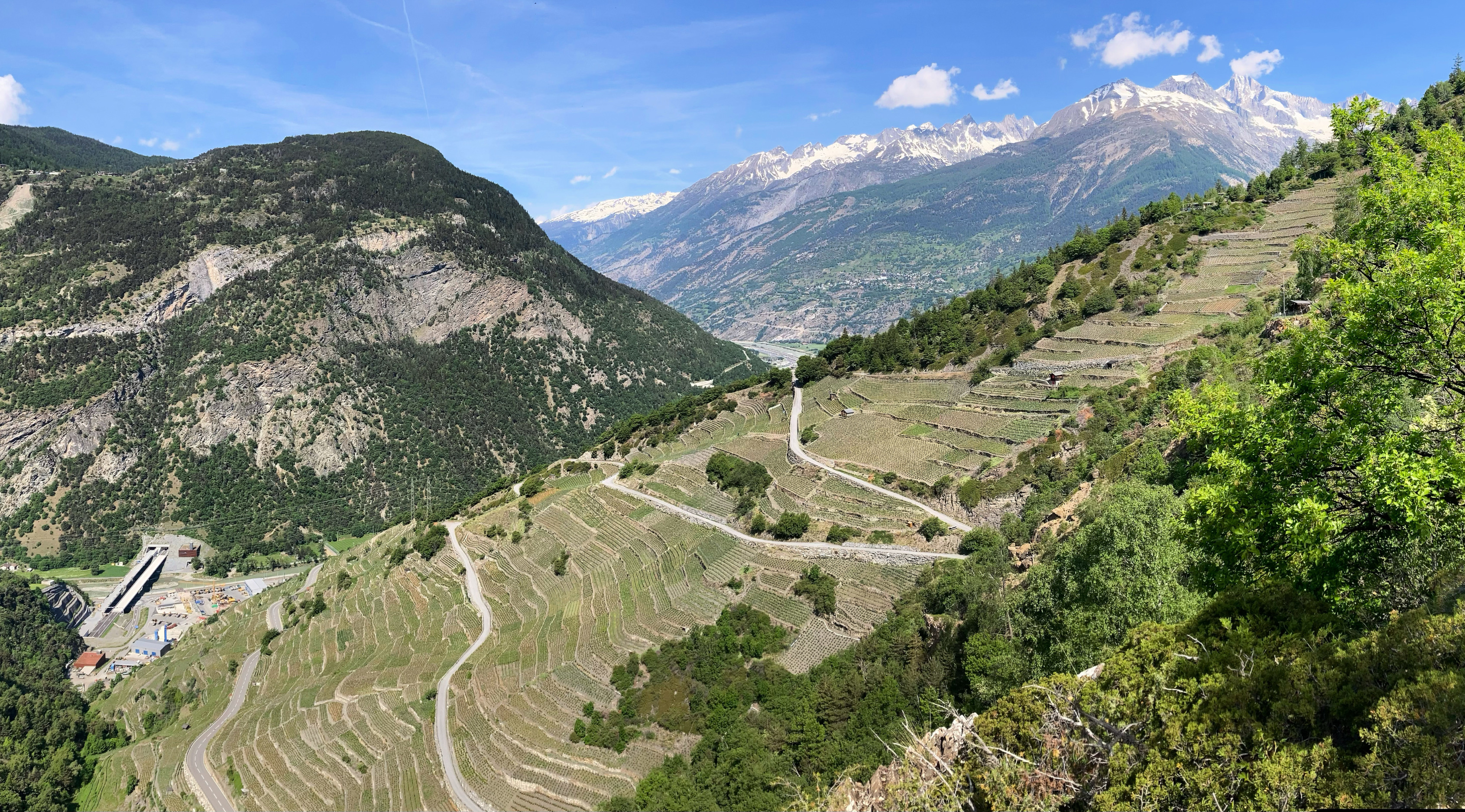In Valais it is possible to make good wine everywhere
Our wine story begins with various coincidences in Fully, a wine village very close to Martigny, in the Lower Valais.
The Gamay vines there are already around 60 years old and produce beautiful small bunches.
We could not resist the opportunity to cultivate a native grape variety, Heida, in the highest vineyard in Europe, at Visperterminen in Upper Valais. And so we ended up cultivating vines at the far ends of the canton’s wine-producing area.
From then on, it seemed normal to add the vine parcels in Raron we later acquired and our winery in Leuk-Stadt, both en route to either end!
Leuk
Our vineyards in Leuk are spread along the right bank of the Rhone and all around Leuk-Stadt and reach from close to the banks of the Rhone at 650m up to 800m.
The soil consists primarily of dolomite rock and is highly calcareous. The soil conditions are ideal for grape varieties such as Johannisberg, Pinot Noir and Cornalin, among others.
Leuk counts an average of 3,500 hours of sunshine per year, making it one of the sunniest regions in Switzerland. The annual rainfall is about 600mm.
The winery in the heart of Leuk-Stadt
Although the name suggests that this is a larger population settlement, the municipality of Leuk has just 4,000 inhabitants. It consists of Leuk-Stadt, Susten, Erschmatt and several small hamlets.
In the Middle Ages, the bishop elevated the prosperous little town, which has existed since Roman times, to the status of a city. Today, Leuk-Stadt is a beautiful little village, where numerous medieval buildings are still preserved. The best way to discover it is to take a leisurely stroll through the village and end the tour with a glass of wine.
Raron
The soil in the Rarnerchumme area comes from sedimentary deposits. It is sandy and moderately calcareous. Its high percentage of gravel and its porous structure allow the vine to develop good roots. Due to the small clay content, the total potential storage of the soil is relatively small and the soil dries out quickly.
The climate is continental and is characterized by strong temperature fluctuations. The name "Chumme" indicates that the vineyard is located in a depression in the terrain. The steep, south-facing slope, thanks to its basin-like shape, stores solar energy and allows the planting of late-ripening grape varieties such as Syrah, even at higher altitudes (> 800m). The annual rainfall of 600mm - 800mm is average for Valais.
Fully
Our Gamay parcel is located in the nature reserve of Les Follatères, which is home to a unique and sometimes rare flora and fauna.
At the southwestern end of Valais, at the spot known as "Rhone bend", both the Mediterranean climate and the dry, continental climate of central Valais influence the wine-growing area. Low rainfall (600mm per year), strong northwesterly winds and the sometimes strong Foehn wind characterize this area and its viticulture.
The geology in the Follatères area is also complex and unique: a mixture of dolomite, gneiss and granite form the parent rock. Our soil for the Gamay is acidic (pH 5) and free of lime. The soil is shallow (< 1m deep), slightly gravelly, with a medium sand content. The clay content is moderate but it enables water to be stored in dry periods, then released to the plant as needed.
Visperterminen
The vineyards of Visperterminen are among the driest in Switzerland in terms of climate. We are in the inner alpine climate area with a moderately continental character; the influence of the Foehn is great, but the annual precipitation is small (< 600 mm). Winter temperatures are not extremely low (no inversion).
Our vineyard is located on a slope facing southeast and the Heida grown on this parcel benefits from optimal sun exposure. The weak, black-grey, slaty soil (called Bündner Schiefer in German) can release the stored heat during the night, so that the grapes can ripen well even at over 1000m. The high gravel content and the weak clay and sand content in the soil cause the rainwater to drain away quickly. Irrigation of the vineyard during the summer months is therefore essential.


